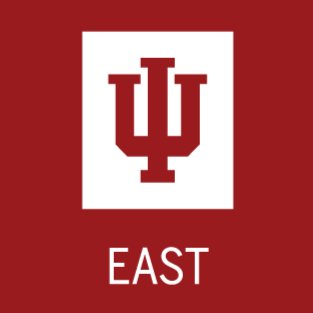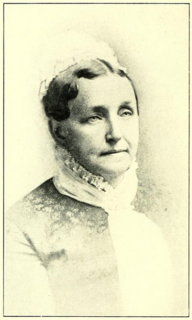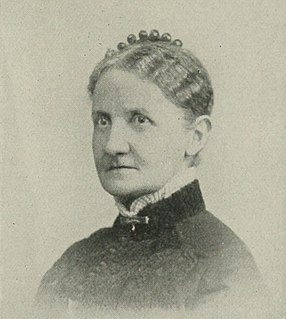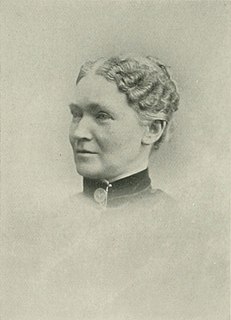
Richmond is a city in eastern Wayne County, Indiana, United States. Bordering the state of Ohio, it is the county seat of Wayne County and is part of the Dayton, OH Metropolitan Statistical Area In the 2010 census, the city had a population of 36,812. Situated largely within Wayne Township, its area includes a non-contiguous portion in nearby Boston Township, where Richmond Municipal Airport is currently located.

Harriet Elisabeth Beecher Stowe was an American author and abolitionist. She came from the Beecher family, a religious family, and became best known for her novel Uncle Tom's Cabin (1852), which depicts the harsh conditions experienced by enslaved African Americans. The book reached an audience of millions as a novel and play, and became influential in the United States and in Great Britain, energizing anti-slavery forces in the American North, while provoking widespread anger in the South. Stowe wrote 30 books, including novels, three travel memoirs, and collections of articles and letters. She was influential both for her writings and for her public stances and debates on social issues of the day.

Earlham College is a private liberal arts college in Richmond, Indiana. The college was established in 1847 by the Religious Society of Friends (Quakers) and has a strong focus on Quaker values such as integrity, a commitment to peace and social justice, mutual respect, and community decision-making. It is primarily a residential undergraduate college but it offers a Master of Arts in Teaching and has an affiliated graduate seminary, the Earlham School of Religion, which offers three master's degrees: Master of Divinity, Master of Ministry, and Master of Arts in Religion.

Indiana University East is a public university in Richmond, Indiana, a regional campus of Indiana University that serves the eastern Indiana and western Ohio area. Established in 1971 by the Indiana University Board of Trustees, IU East enrolls over 4,000 students on its five-building, 174-acre campus and in online classes. IU East has 60 academic degree programs, offering bachelor's and master's degree programs and certificates in areas of Business and Economics, Education, Humanities and Social Sciences, Natural Science & Mathematics, Informatics, General Studies, Nursing and Health Sciences, and Social Work.
The Hayes Arboretum is an arboretum of 330 acres (130 ha) located in Richmond, Indiana, United States. It is open free to the public Tuesdays through Saturdays, 9:00 A.M. to 5:00 P.M. It is the primary project of the Stanley W. Hayes Research Foundation, a private operating foundation. The Foundation owns a total of 466 acres (189 ha) of property in Wayne County, IN.

The Harriet Beecher Stowe House is a historic house museum and National Historic Landmark at 73 Forest Street in Hartford, Connecticut that was once the home of Harriet Beecher Stowe, author of the 1852 novel Uncle Tom's Cabin. Stowe lived in this house for the last 23 years of her life. It was her family's second home in Hartford. The 5,000 sq ft cottage-style house is located adjacent to the Mark Twain House and is open to the public. It was listed on the National Register of Historic Places in 1970, and declared a National Historic Landmark in 2013.

Originating in New England, one particular Beecher family in the 19th century was a political family notable for issues of religion, civil rights, and social reform. Notable members of the family include clergy (Congregationalists), educators, authors and artists. Many of the family were Yale-educated and advocated for abolitionism, temperance, and women's rights. Some of the family provided material or ideological support to the Union in the American Civil War. The family is of English descent.

Wayne Township is one of fifteen townships in Wayne County, Indiana, United States. As of the 2010 census, its population was 41,217 and it contained 19,510 housing units.

The Harriet Beecher Stowe House is a historic home and National Historic Landmark at 63 Federal Street in Brunswick, Maine, notable as a short-term home of Harriet Beecher Stowe and Calvin Ellis Stowe and where Harriet wrote her 1852 novel Uncle Tom's Cabin. Earlier, it had been the home of Henry Wadsworth Longfellow as a student. It is today owned by Bowdoin College. A space within the house, called Harriet's Writing Room, is open to the public.
The National Park System preserves and interprets the history of women in American society. Many national parks, monuments and historic sites represent America's women's history as a primary theme, while numerous others address American women's history somewhere in their programs and preservation activities. The lists of sites below is not exhaustive, but includes sites closely related to themes in U.S. Women's History. Click here for an article on Women in the National Park Service.

Amelia Jenks Bloomer was an American newspaper editor, women's rights and temperance advocate. Even though she did not create the women's clothing reform style known as bloomers, her name became associated with it because of her early and strong advocacy. In her work with The Lily, she became the first woman to own, operate and edit a newspaper for women.

Rhoda Coffin, (1826–1909), was a Quaker social reformer, author, temperance crusader, and women's rights advocate who is best known for her efforts in prison reform. She held an integral role in establishing the Indiana Reformatory Institution for Women and Girls in 1869. It became the first female-controlled women's prison in the United States. She also served as president of the reformatory's board of managers. Coffin’s efforts on behalf of prison reform made her a leading figure in the national prison reform movement, and she traveled widely, wrote articles, and delivered speeches on the topic. She was also a champion of other causes that assisted women and children.
William S. Kaufman (1849–1916) was an American architect known for designing a number of public buildings, primarily in Indiana and Ohio.

The Lily was the first U.S. newspaper edited by and for women. It was published from 1849 to 1853 by Amelia Jenks Bloomer (1818–1894), before she sold the newspaper to Mary Birdsall in 1854. While the newspaper initially focused on temperance, it soon broadened its focus to include the many issues of women’s rights activists in the 1850s. It grew in its distribution as a result of its discussion of bloomers, a comfortable fashion popularized by Bloomer in the paper.
Mary B. Thistlethwaite Birdsall (1828–1894) was born in Pennsylvania to English immigrants. She grew up on a farm near Richmond, Indiana, where she married Thomas Birdsall in 1848. They had three sons together. She was a journalist, a suffragist, and a temperance worker. She began her journalism career as the woman's editor at the Indiana Farmer newspaper. For about five years she owned The Lily, a newspaper for women, which she purchased from suffragist Amelia Bloomer in 1854. She helped organize the second women's rights convention in Indiana. At that Indiana convention in 1852, she was elected as secretary for the newly-formed Indiana Woman's Rights Association (renamed the Indiana Woman's Suffrage Association in 1869, and eventually became president of the organization. Birdsall was a vice-president at the fourth National Women's Rights Convention in Cleveland, Ohio, in 1853. She was among the first three women to address the Indiana legislature in 1859 to present a women's rights petition, speaking for a half-hour in support of women's suffrage. Birdsall died in Philadelphia in 1894 and interred at Earlham Cemetery in Richmond. Her Richmond home, a model of progressive architecture as espoused by Catherine Beecher, was listed on the National Register of Historic Places in 1999.
William Wilfred Birdsall (1854–1909) was a Quaker educator who was president of Swarthmore College from 1898 to 1902.
Mary F. Thomas (1816–1888) was a pioneer American woman physician, abolitionist, and temperance and women's rights leader who advocated for women, as well as those in need. Born into a Quaker family, she grew up in Ohio and spent most of her life in Indiana. Thomas was an active member of the women's suffrage movement and a founding member of the Woman's Rights Association of Indiana, serving as a vice president and president of the Indiana organization. In 1859 she became the first woman to present a petition before the Indiana General Assembly, calling for passage of laws to provide property rights for married women and a women's suffrage amendment to the Indiana Constitution. At the national level she served a one-year term as president of the American Woman Suffrage Association. In the mid-1850s she was a coeditor of Mary Birdsall's national woman's rights magazine, The Lily, and later an associate editor of the Mayflower with Lizzie Bunnel and a contributor to Woman's Journal.

Esther Pugh was an American temperance reformer from Ohio. She served as Treasurer of the National Woman's Christian Temperance Union (WCTU), a Trustee of Earlham College, as well as editor and publisher of the monthly temperance journal, Our Union. She died in Philadelphia in 1908.

Mary Coffin Johnson was an American activist and writer. She was acquainted with Abraham Lincoln, and was a friend of Henry Ward Beecher and his wife Eunice.

Emily Caroline Chandler Hodgin was an American temperance reformer. She was one of the leaders in the temperance crusade of Terre Haute, Indiana, in 1872, and was a delegate to the convention in Cleveland, Ohio, where the crusading movement developed into the organization of the Woman's Christian Temperance Union (WCTU). After that, she began the work of organizing forces in neighboring parts of Indiana. She became president of the WCTU in her own county and secretary of the State temperance association. She greatly aided the cause from the lecture platform, for though a member of the Society of Friends, she availed herself of the freedom accorded to the speaker in meetings.


















